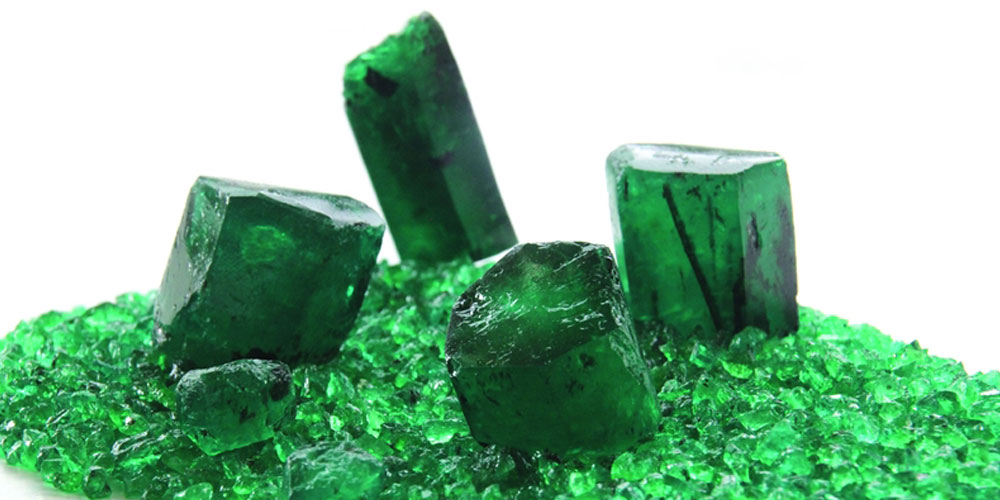 Emerald is a dark green gemstone. It 's one of the most expensive, gemstones and is widely used in jewelry design. Emeralds belong to the beryl variety and are colored green by trace amounts of chromium and sometimes vanadium. Emeralds have been widespread since antiquity, with the first known emerald mines operating in Egypt and the Red Sea from 3000 BC to1500 BC.
Emerald is a dark green gemstone. It 's one of the most expensive, gemstones and is widely used in jewelry design. Emeralds belong to the beryl variety and are colored green by trace amounts of chromium and sometimes vanadium. Emeralds have been widespread since antiquity, with the first known emerald mines operating in Egypt and the Red Sea from 3000 BC to1500 BC.
Maharajahs and emperors adorned their crowns and jewels with emeralds throughout time and Cleopatra was known for her preference in this gemstone. Notable jewels adorned with emeralds can be found in the most popular museums around the world.
Emerald mines exist in several countries around the world, such as Zambia, Zimbabwe, India, Pakistan, the USA, Russia, France, and Madagascar. The most important emerald mines, however, are today located in Colombia, where at least half of the world's production is being mined.
.jpg) Colombia produces the Trapiche, the rarest type of emerald, which has six dark green radial accents (dirt). Inclusions are not always a negative feature in emeralds as they are unique for each gemstone and can be used to identify a particular emerald.
Colombia produces the Trapiche, the rarest type of emerald, which has six dark green radial accents (dirt). Inclusions are not always a negative feature in emeralds as they are unique for each gemstone and can be used to identify a particular emerald.
Emeralds, like other gemstones, are evaluated based on the four key features that affect their value (4 C's, carats, cut, color and clarity). Color and clarity play a key role in emerald evaluation. The color of an emerald gemstone must be clear and bright green and the tone about 75%. In addition, it must be of high purity, which is detected by the naked eye and not by 10x magnification, as in diamonds. Thus, if an emerald has no visible inclusions in the naked eye, it is considered flawless.
The cabochon form is a usual choice for emeralds followed by oval and rectangular shapes, with the latter generally known as emerald cut, because it best illustrates the color and shine of the gemstone.
Elizabeth Taylor Emerald Jewelry Set
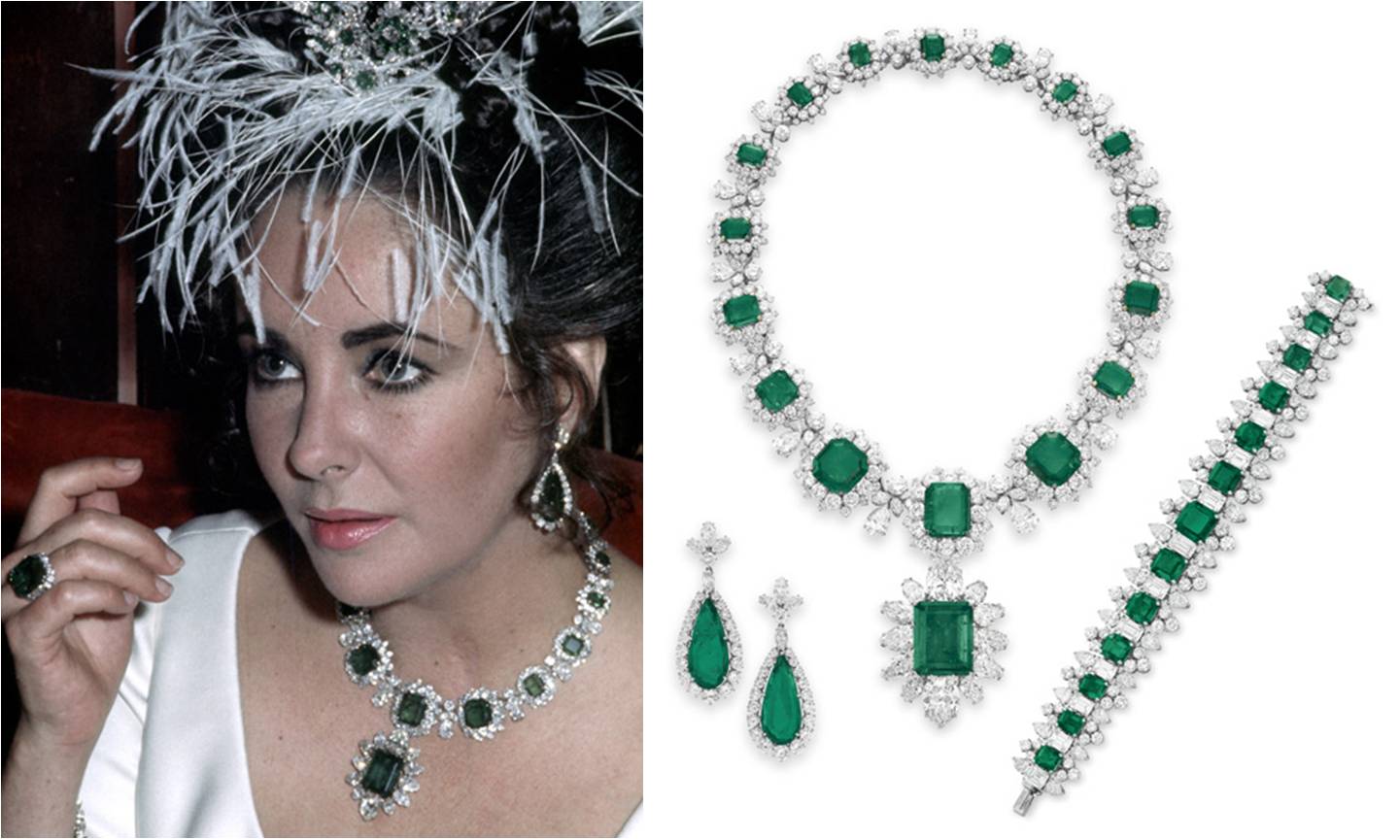 The famous Hollywood actress, Elizabeth Taylor, had one of the largest and most famous jewelry collections. A dominant feature in her collection was the emerald set consisting of a necklace, brooch, ring, bracelet, and earrings. The total value of the set is estimated at $ 100 million and was gifted to Taylor by Richard Burton, her husband at the time.
The famous Hollywood actress, Elizabeth Taylor, had one of the largest and most famous jewelry collections. A dominant feature in her collection was the emerald set consisting of a necklace, brooch, ring, bracelet, and earrings. The total value of the set is estimated at $ 100 million and was gifted to Taylor by Richard Burton, her husband at the time.
Chalk Emerald
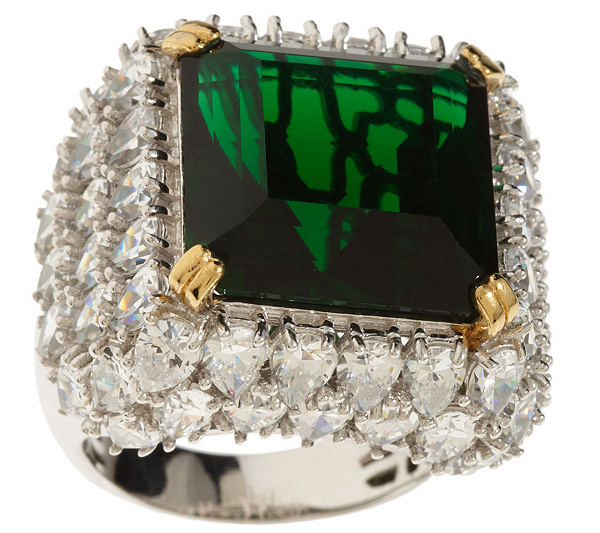 Chalk Emerald is of Colombian origin and weighs about 38.4 carats. It was owned by the royal rulers of a princely Indian state for many years and was the centerpiece of an emerald and diamond necklace. At the beginning of the 20th century, the emerald was cut into 37.82 carats and it is now set in a ring, surrounded by 60 Pear diamonds with a total weight of 15 carats. In 1972 the Chalk family, that owned the ring at the time, donated it to the National Museum of Natural History at the Smithsonian Institution.
Chalk Emerald is of Colombian origin and weighs about 38.4 carats. It was owned by the royal rulers of a princely Indian state for many years and was the centerpiece of an emerald and diamond necklace. At the beginning of the 20th century, the emerald was cut into 37.82 carats and it is now set in a ring, surrounded by 60 Pear diamonds with a total weight of 15 carats. In 1972 the Chalk family, that owned the ring at the time, donated it to the National Museum of Natural History at the Smithsonian Institution.
Gachala Emerald
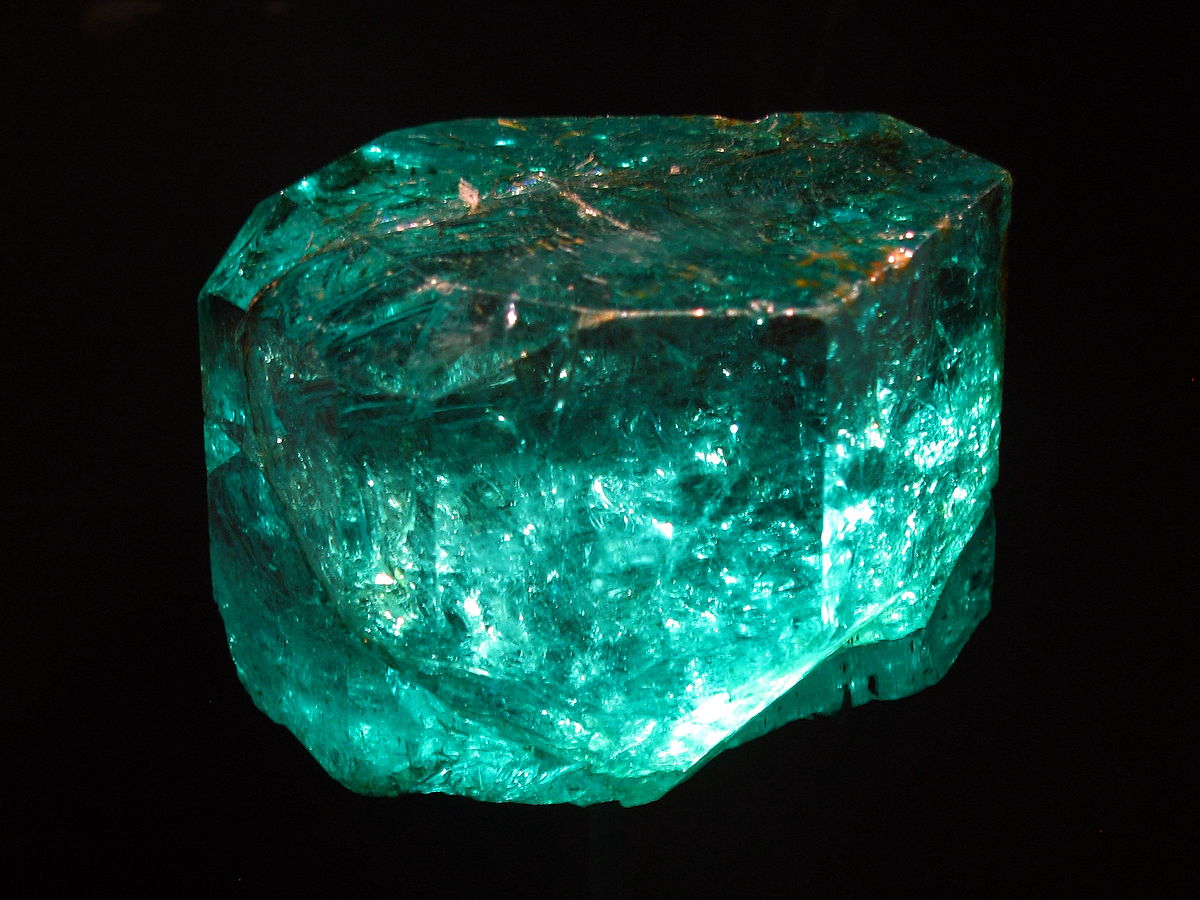
It is one of the largest known emeralds in the world with a total weight of 858 carats and a size of 5 centimeters. The Gachala Emerald was mined in 1967 in the Gachala region of Colombia, from where it got its name. It belonged to American jeweler Harry Winston until 1969 when he donated it to the National Museum of Natural History at the Smithsonian Institution.
Mogul Mughal Emerald
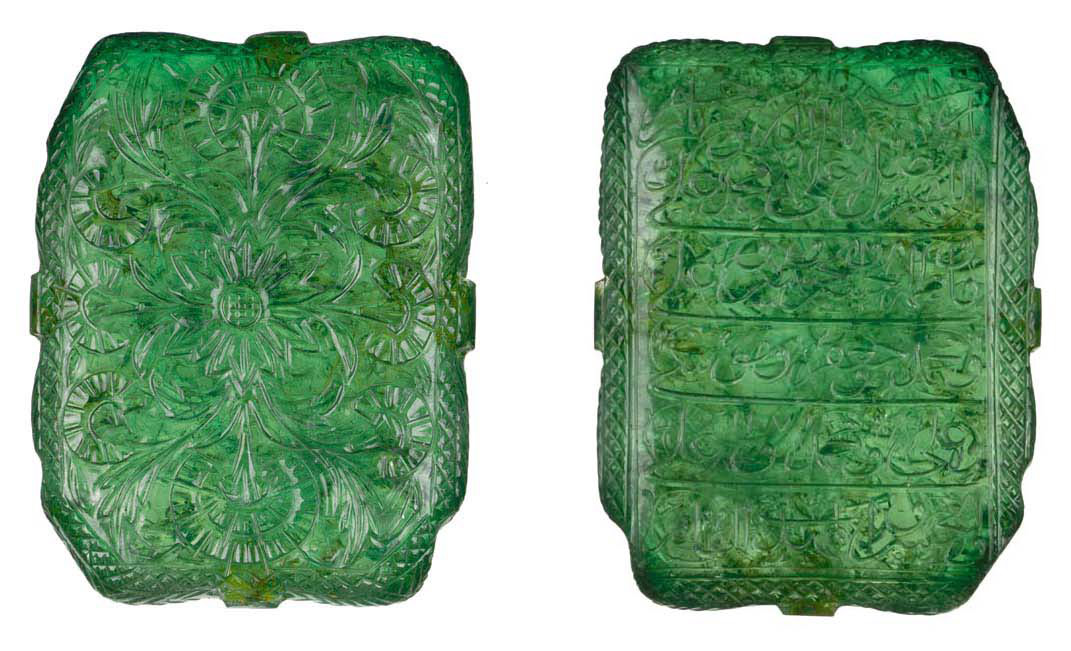 The Mogul Mughal Emerald weighs 217.80 carats and it was engraved in 1107 with Shiite invocations in Naskh script. It was mined in Colombia and later sold to India, where emeralds have been in great demand for centuries. In 2001 it was auctioned by Christie's Auction House for £1,543,750 and is exhibited at the Museum of Islamic Art in Qatar since 2008.
The Mogul Mughal Emerald weighs 217.80 carats and it was engraved in 1107 with Shiite invocations in Naskh script. It was mined in Colombia and later sold to India, where emeralds have been in great demand for centuries. In 2001 it was auctioned by Christie's Auction House for £1,543,750 and is exhibited at the Museum of Islamic Art in Qatar since 2008.
Mackay Emerald
.jpg)
The 167.97ct Mackay emerald was found in the Moussos region of Colombia. The emerald is set in an Art Deco necklace by Cartier and it's surrounded by diamonds. Clarence Mackay gifted the necklace to his wife Anna Case, a primadonna of the New York Metropolitan Opera, who in turn donated the necklace to the National Museum of Natural History at the Smithsonian Institution in 1984.